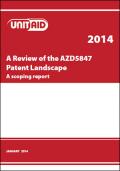Publications - Released in 2014
TB treatment has become more complex, particularly with the emergence of multidrug-resistant (MDR) strains of Mycobacterium tuberculosis. There were approximately 450 000 new cases of multidrug-resistant tuberculosis (MDR-TB) worldwide in 2012.1 MDR-TB is resistant to the two most commonly used TB drugs, isoniazid and rifampicin. It requires extended treatment with second-line drugs that are less effective and have more adverse effects than isoniazid- and rifampicin-based regimens.
Given the emergence of MDR-TB, and the need to shorten treatment duration, new drugs are required. The last of the current anti-TB treatments—rifampicin—was introduced in 1963. Since then, research for new TB treatments had largely come to halt. However, in recent years the pipeline for potential new TB treatments has started to look more promising than it has for the past 50 years.
One compound that is currently in the pipeline and generating interest is AstraZeneca's investigational compound AZD5847. AZD5847 has been identified as a possible new treatment for drug-susceptible TB and/or for MDR-TB.
Downloads
Organizations
- Unitaid






